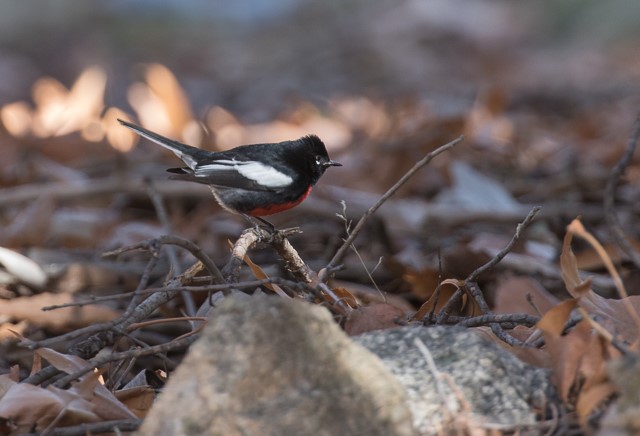Jake Mohlmann reports from Arizona: A Winter Week in the Southeast 2023 tour
We just finished up another Winter Week Tour through southeast Arizona covering 900 miles of everything from highways to dusty 2-tracks. Five distinct zones were covered thoroughly, with several people’s favorite being the scenic Chiricahua Mountains, this year with lots of snow in its upper reaches adding to the natural beauty that this area already boasts.
Our group ready to visit Cave Creek Canyon.

Of course no trip to the ‘Chiris’ would be complete without a drive through the orange and green Cave Creek Canyon. This road shortly leads up into the pine forests and home to one of the most range-restricted birds north of the Mexican Border. With only a couple of hours to devote to finding them, we were elated to finally track some Mexican Chickadees foraging with a roving flock of Bushtits.
The Chiricahua Mountains host Mexican Chickadee, of which we saw 3.

One of the highlights this year was witnessing some of the major finch and thrush irruption happening across the state of Arizona right now. Scads of American Robins have been demolishing anything resembling a berry, right alongside larger than normal numbers of Western Bluebirds and Cedar Waxwings. At Cave Creek Ranch we encountered one of the rarest irruptors this year, when a female Evening Grosbeak came in to gorge on black oil sunflower seeds. At a well-placed fountain south of Tubac we were amazed to have not only a group of Lawrence’s Goldfinches come in to within feet, but also several Red Crossbills showing up to join the photo taking party. Even at our home away from home on the San Pedro River a Townsend’s Solitaire popped in a few times to utilize the opportune oasis.
Evening Grosbeak was added to the overall trip list.

Red Crossbills joined Lawrence’s Goldfinches at arms-length.

One morning a Townsend’s Solitaire greeted us at breakfast.

Not only is the San Pedro River a great place to base out of, but it also provides a suite of good birds rarely encounter elsewhere on tour. A particularly confiding Winter Wren was making its wintering home out of a debris pile choking the river near the San Pedro House. We also spent some time in the morning on foot from our lodge to track down the recently split Chihuahuan Meadowlark that resides in the National Conservation area just north of where we stay.
A Winter Wren spending time along the San Pedro River.

Chihuahuan Meadowlarks were seen multiple days.

In Madera Canyon the feeders were ripe with regional bird species like Hepatic Tanagers, Arizona Woodpeckers, and Yellow-eyed Juncos. One highlight here was an adult Painted Redstart foraging at eye level working the dead leaves on the dirty ground. The bird repeatedly flashed the white patches on its wings and tail in hopes of getting a specific type of prey to flush, the exact method of foraging this species is famous for.
Painted Redstart foraging at length near Madera Picnic Area.

Perhaps the most confiding bird of the trip came when we went to a park in Patagonia in search of a wintering Williamson’s Sapsucker. It took all of about 2 minutes to find the bird who was sticking close to his beautiful hole excavations in hopes it may attract some insects for easy pickings. He never moved for the 15 minutes we were there.
This male Williamson’s Sapsucker resting at his holes.

The Sandhill Crane show in the Sulphur Springs Valley is something that needs to be seen to believe. At Whitewater Draw WMA we watched as thousands of gray crane planes came swirling in their family groups and gently touched down right before our eyes. The sky was filled with black peppered crane dots as far as one could see to the north as we sat for hours enjoying the production both visually and auditorily.
A family group of cranes comes in for a landing.

